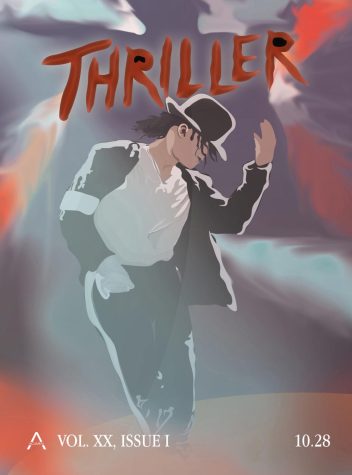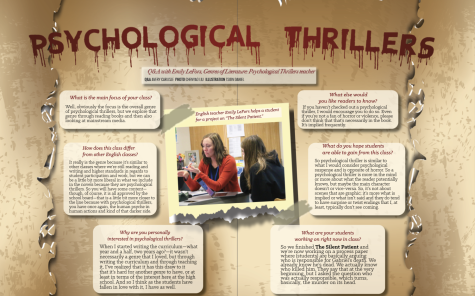Horrendous
Horror genre has become unoriginal, recycled, unenjoyable
 Imagine a laundry machine. Instead of using detergent, however, this machine just uses plain water. So all the dirty particles in your clothes continue to cycle over and over again, being “washed” in their own filth. Then pause the machine and throw in a bucket of mud. Resume. Then pause the machine and throw in a gallon of motor oil. Resume. After a couple minutes, take out the clothes and take a look at the abomination you’ve just created. The analogy I gave you, believe it or not, reflects the current state of horror movies.
Imagine a laundry machine. Instead of using detergent, however, this machine just uses plain water. So all the dirty particles in your clothes continue to cycle over and over again, being “washed” in their own filth. Then pause the machine and throw in a bucket of mud. Resume. Then pause the machine and throw in a gallon of motor oil. Resume. After a couple minutes, take out the clothes and take a look at the abomination you’ve just created. The analogy I gave you, believe it or not, reflects the current state of horror movies.
But before I explain, let’s look back at the history of horror movies. The first movie considered to be in the horror genre is thought to be “Le Manoir du Diable” created in 1896 by French film director Georges Méliès. The movie, translated to English as “The House of the Devil,” was relatively short—just three minutes long—however, the new genre gained lots of popularity for its fear-invoking screenplay. Horror continued to expand. The next major movie was “Nosferatu,” a German film created in 1922 that was over an hour long.
However, horror films, while revolutionary in the early eras of movie-making, quickly became some of the most repetitive, predictable and boring movies one could watch. Every horror movie just seems completely identical to the next, using the same tropes, the same jumpscare techniques, the same stereotypical scenarios. Jason in “Friday the 13th” is Michael Meyers in “Halloween” is Freddy Kruger in “Nightmare on Elm Street.”
The “jock” character who looks strong always dies first. There’s always the person who suggests the group to split up. There’s the telephone that never works. There’s the same “found footage.” There’s the bad guy who won’t die or the car that won’t start.
Do you see what I’m getting at? This is the mud and motor oil that I was talking about. The same old stereotypes, movie tropes and cliches. A potential for a creative plot is contaminated by garbage that directors forcibly put into the movie. The laundry machine then keeps on spinning, contaminating other horror movies that decide to be unoriginal by forcing jumpscares, stereotypical killers and ignorant characters into the plot. The product you get after spinning the laundry in a pile of mud and motor oil is an average 21st century horror movie.
Look at “Paranormal Activity” as a prime example of a trashy, modern movie. This garbage franchise made seven whole movies without ever learning its lesson. Found footage, constant jumpscares, a boring and repetitive plot. I mean, audiences essentially stare at rooms through security cameras for the entirety of the movie. The plot is just repeatedly washed over and over in the dirty laundry machine, the same features reused again and again.
Horror movies just don’t have the same impact as ones in the past. Today, it’s difficult to be creative and avoid cliche plots. After the wave of “slasher” films in the ‘80s, they became too overused to become impactful. Do you hear anybody talk about new slasher movies? Do you hear anybody say that the eighth “Halloween” movie is better than the first?
In conclusion, horror movies have become too unoriginal to be enjoyable anymore. That’s why many people enjoy watching older, retro horror movies than their modern counterparts. Horror movies have lost their creativity, and with it, their overall impact toward fans.





